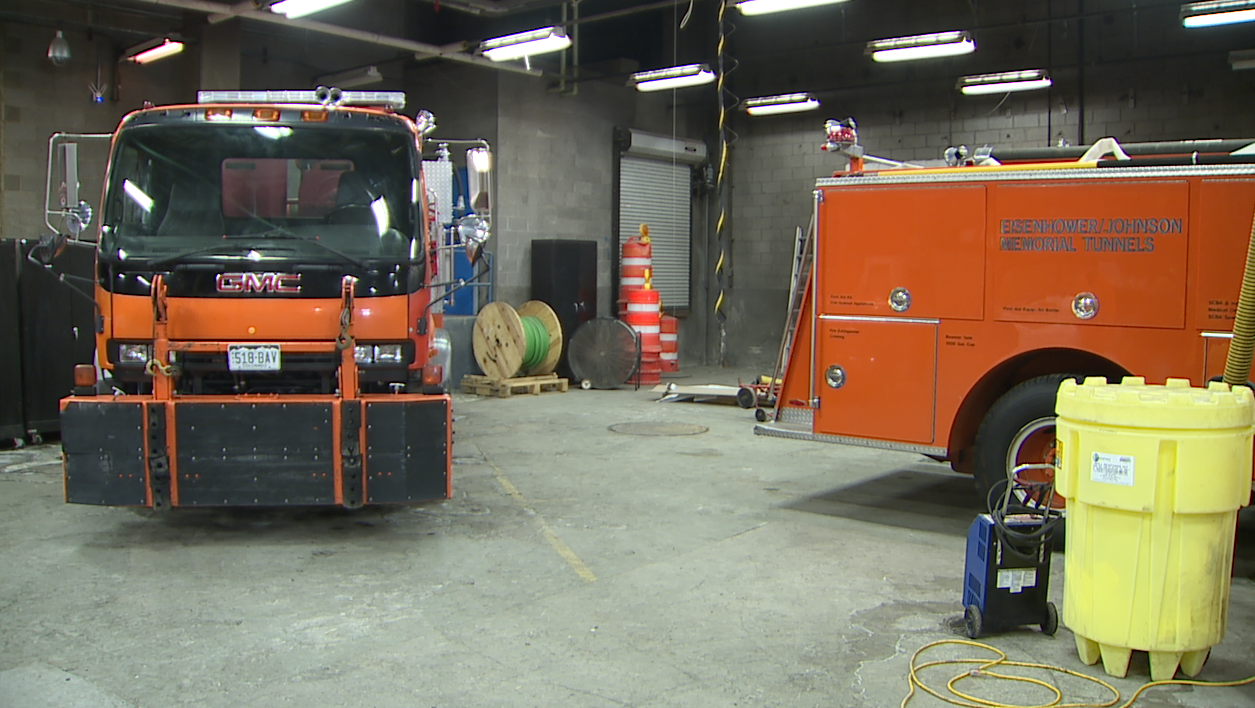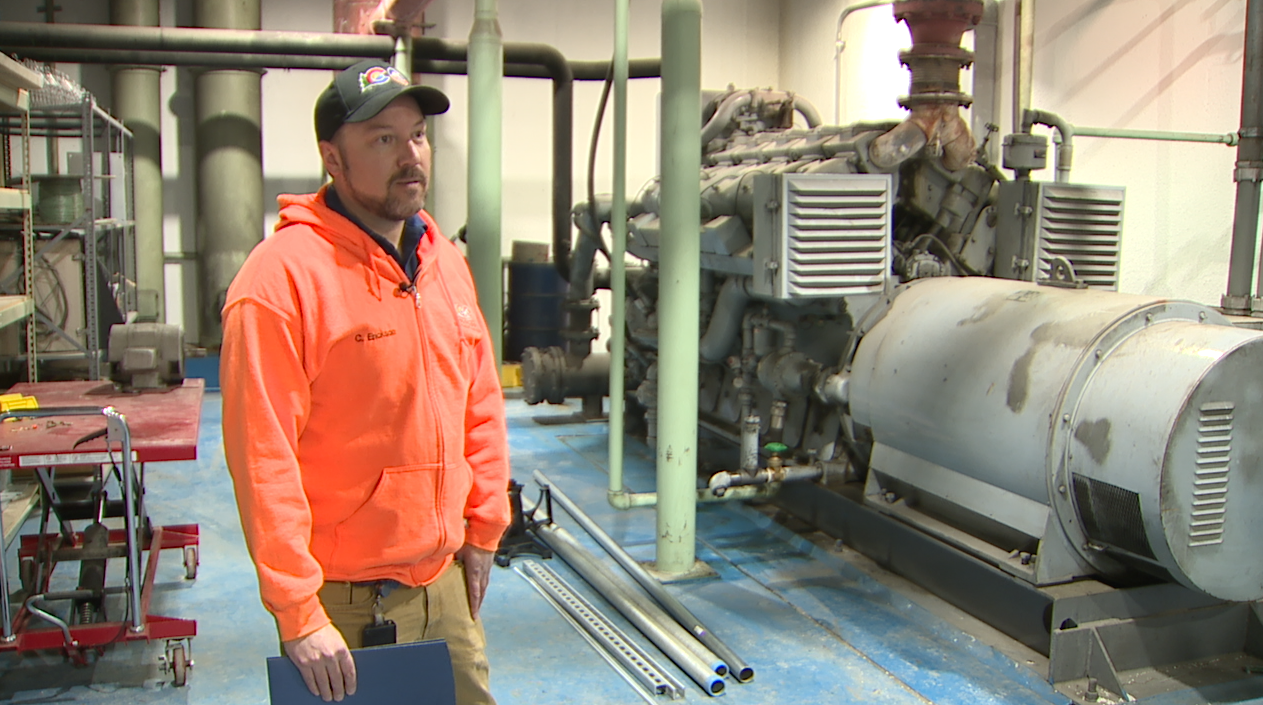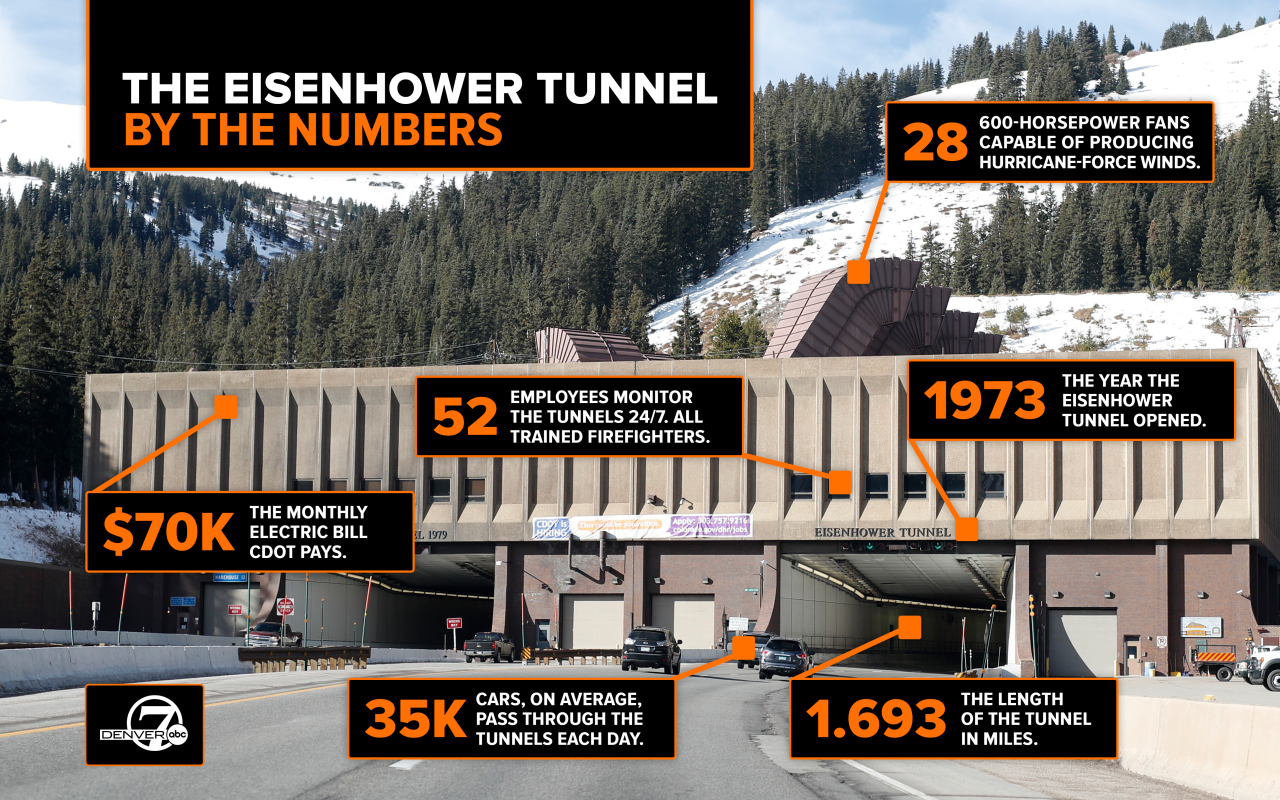Have you ever wondered about the inner workings of the Eisenhower Tunnel as you safely travel through the nearly two-mile-long hole in the mountain?
Many of the occupants of the roughly 32,000 cars that pass through the 1.69-mile-long Eisenhower Tunnel each day may not realize that there is a team of Colorado Department of Transportation employees making sure that your time in the tunnel is uneventful.
READ MORE: 50 years connecting the west and east: A history of Colorado's Eisenhower-Johnson Memorial Tunnel
Every crew member — about 50 employees — assigned to operations at the tunnel is a trained firefighter. Not only that, but they have their own fire truck so they can respond to fires immediately.

The tunnel is also equipped with other systems to mitigate harm in case of a fire. A sprinkler system with a 115,000-gallon reservoir can be engaged if a fire breaks out.
'I'm your biggest fan'
Additionally, 28 fans sit atop the tunnel, pumping out carbon monoxide produced by vehicles passing through. But if there was a fire, the 600-horsepower fans are ramped up to their highest setting, creating hurricane-force winds to dissipate the toxic smoke. Each fan can produce 500,000 cubic feet per minute of airflow.
The massive fans are used sparingly, according to Chris Erickson, a control room operator with CDOT. He said the cost to operate them is astronomical — about $1,000 to turn just one fan on. CDOT's electric bill for the two tunnels is about $70,000 every month—yikes!

The fans are turned on to their lowest setting if carbon monoxide levels, which are constantly monitored, increase. However, one exhaust and one supply fan per side of the tunnel are operating all the time on low.
“Airflow is key," Erickson said. "The cars actually do quite a good job of pushing air in and out. When they come into the tunnel, they are pushing air in, and when they’re driving out, they push it out."

Watt happens when the lights go out?
And if there is a power outage, two emergency generators — capable of providing power to 80 homes — can be turned on, which can power a lot of systems, but not everything, including all 7,500 fluorescent lights in both tunnels.
"It runs about every third to seven lights in the tunnel. It’s able to run about one fan a piece,” Erickson said.
He said power outages are not that uncommon due to the nature of where the tunnels are located.
"We are at almost 11,000 feet here, so we do lose power quite often actually. Windstorms, snow, avalanches. We’ve lost power on one side for months," Erickson explained. "We are able to tie the tunnel together so we can bring power from one side to the other if we need to."
The nerve center
Erickson works in the control room, what he calls the "nerve center" of the tunnel. He and his colleagues work above the east entrance of the tunnel. It's so close to the traffic below they can hear cars pass through.

Inside the control room, they are monitoring traffic flow, carbon monoxide levels and watching out for any incidents that might slow traffic.
"Oh, yeah. We're kind of like our own little city up here. We have our own water treatment plant. Our own power generation. So, we're definitely self-sufficient," Erickson explained.
Stop and go
They also have a system that counts the number of cars that pass through. The most they have handled was 158,000 vehicles in one day, which is the maximum number of vehicles the tunnel can accommodate. If traffic exceeds a certain number per hour, they begin metering.
“So, you'll start seeing us metering … when we get around for 4,000 to 5,000 vehicles per hour,” Erickson said. “That's just to keep traffic from building up in the tunnel.”
That's the reason you see traffic lights at each entrance to the two tunnels. They only allow so many cars through when metering is in progress. CDOT has been doing it this way for 25 years.

However, they recently began testing a new system of metering called continuous flow metering. Instead of just stopping all traffic, traffic is metered separately in four lanes.
"We don't want traffic to ever really be backed up into the tunnel. So that's just in case of an emergency. We have to get emergency vehicles through here and there’s stopped traffic in the tunnel — you know, that's a problem," Erickson said.
What happens if a vehicle stops or gets stuck inside the tunnel?
"If somebody does stop in the tunnel, we’ll stop all traffic. We'll go in and assist them in and out," Erickson said.

Local






